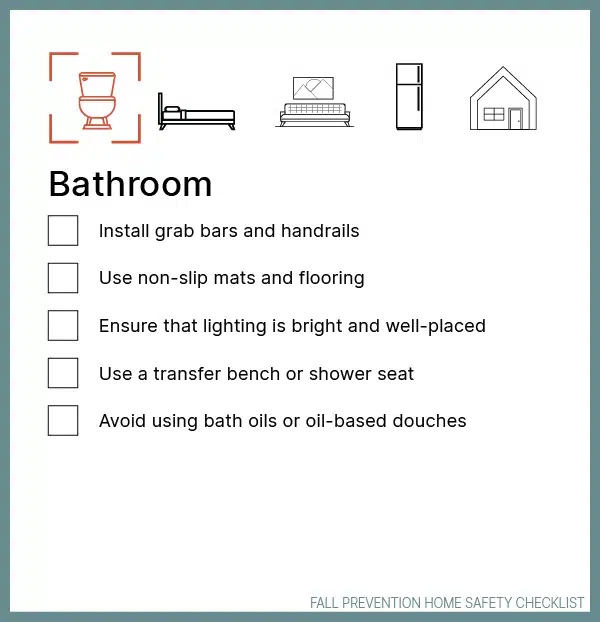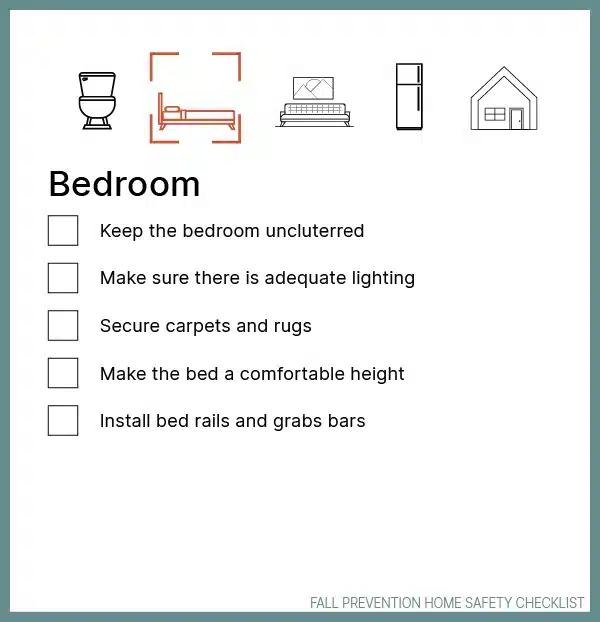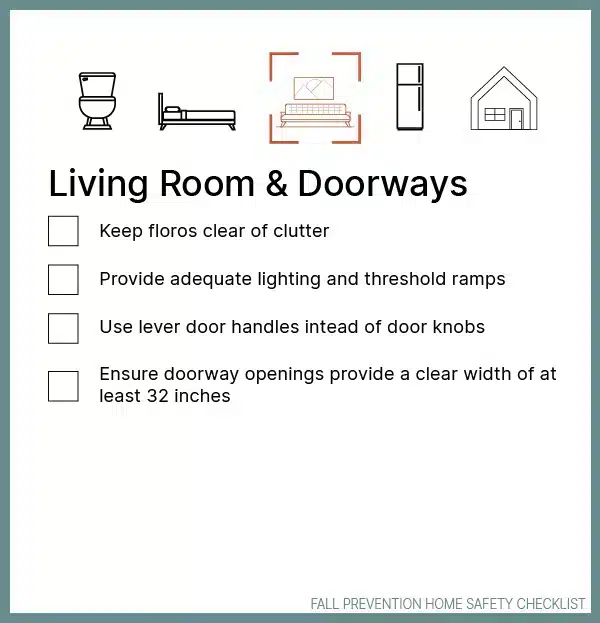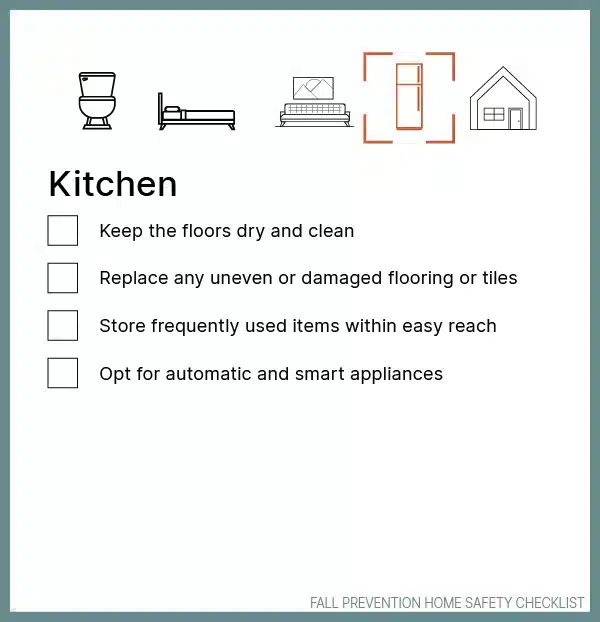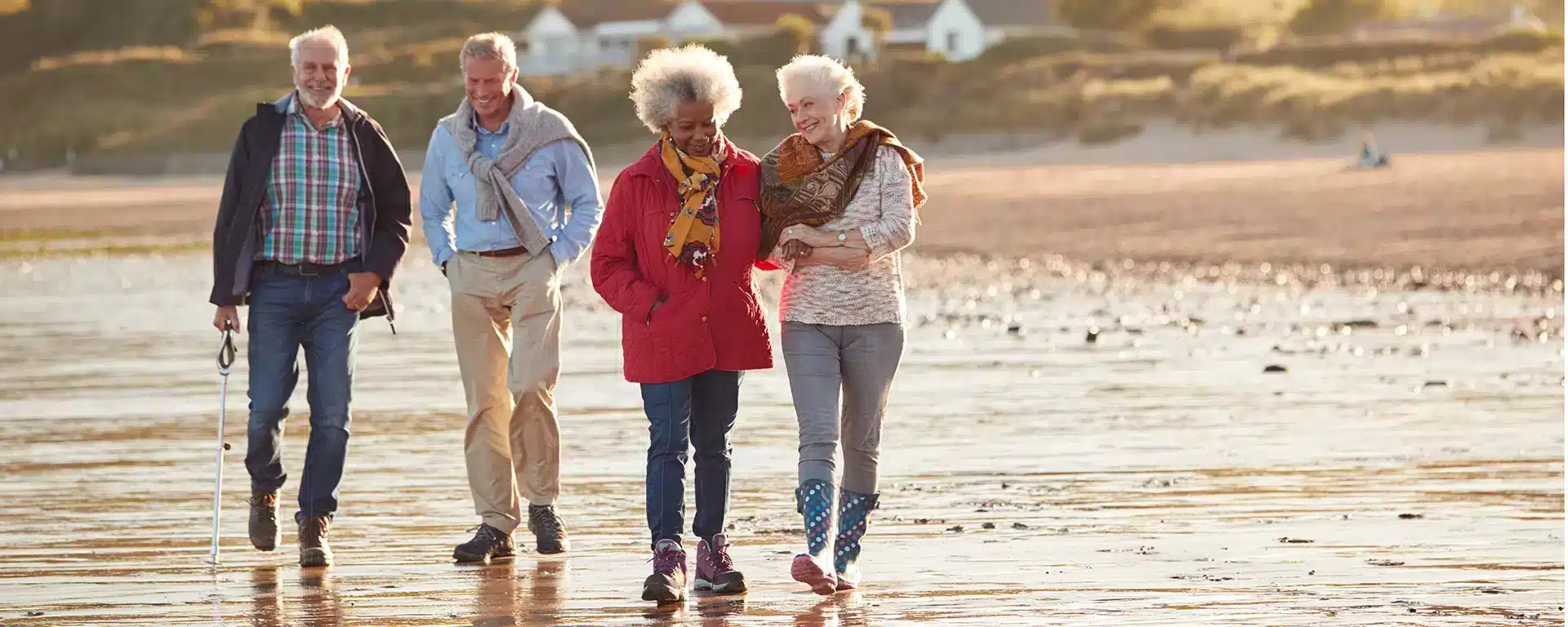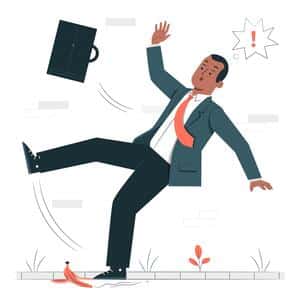A Home Safety Checklist to Prevent Falls For Older Adults at Home
Falls are the leading cause of injury and death among older adults, with one out of every four seniors experiencing a fall each year. They can result in serious injuries, hospitalizations, and the loss of independence, but the good news is that many falls can be prevented through proper home safety measures.
In this article, we will discuss some of the top causes of falls for older adults in their homes and share tips to help reduce the risk of accidents.
In the Bathroom
The bathroom is one of the most hazardous areas in the home. Wet and slippery surfaces, lack of grab bars or handrails, and inadequate lighting can all contribute to the risk of falls.
For older adults with mobility issues, getting in and out of the bathtub or shower can be a risky undertaking, making falls a serious concern as they perform their daily activities.
Follow these steps to reduce the risk of falls in the bathroom:
- Install grab bars and handrails near the toilet, shower, and bathtub. In the absence of walls to place safety equipment on, you may consider floor-mounted safety poles and rails.
- Use non-slip mats or strips in the shower and bathtub. In case you will be renovating your bathroom, it is best to opt for moisture-resistant materials such as ceramic or porcelain. Choose tiles with textured surfaces or matte finish to provide a better grip.
- Ensure that lighting is bright and well-placed to avoid slips. Motion sensor lights are advisable, to make night-time trips to the bathroom safer.
- A transfer bench or shower seat is another option that can help seniors safely move in and out of the shower or bathtub. It is recommended to have older individuals sit down before entering and exiting.
- Avoid using bath oils or oil-based douches, which can make the surfaces slippery and increase the risk of falls.
In the Bedroom
Falls in the bedroom can be caused by cluttered floors, obstructed pathways, loose or frayed carpets and rugs, unstable or improperly placed furniture (such as a bed that is too high or too low), and electrical cords or wires that are not secured properly. Poor footwear, such as slippers or socks without proper grip, can also increase the risk of falls.
Here are some tips to reduce the risk of falls in the bedroom:
- Keep the bedroom uncluttered. Remove any objects that may obstruct pathways, such as clothes or shoes on the floor. Keep furniture to a minimum to allow for easy movement, especially if individuals are using a wheelchair, cane, or other mobility devices in the house.
- Make sure there is adequate lighting in the bedroom to prevent tripping over objects or misjudging steps. Consider installing motion-activated night lights or bedside lamps.
- Secure carpets and rugs. Loose or frayed carpets and rugs can be a tripping hazard, so make sure they are secured to the floor with non-slip pads or adhesive tape.
- Make the bed a comfortable height. Having the bed too high or too low can make it difficult for seniors to get in and out of bed, so adjust the bed height accordingly. Consider adding a bed rail to assist with the transition from lying down to sitting/standing positions.
- If necessary, install grab bars near the bed and around the bedroom to provide support and stability. These can be especially useful during the nighttime when visibility is limited.
In the Living Room and Doorways
Several factors can contribute to falls in the living room, including cluttered floors, loose rugs or carpets, scattered electrical cords or wires, poor lighting, and unstable furniture, or those placed in hazardous locations.
Navigating doorways can be challenging for older adults, particularly if the doorway is too narrow, has an additional step or threshold to cross, lacks handrails on ramps or porch steps, or utilizes a round door knob (which can be difficult to turn for individuals with dexterity issues, kids, or people carrying items).
Want to make your living room and doorways safer?
- Keep floors clear of clutter. Keep furniture to a minimum and make sure that there is nothing blocking the way.
- Provide adequate lighting and threshold ramps to avoid tripping. An uneven step, no matter how small, can be hazardous and increase the risk of falls, so it’s essential to ensure that thresholds are level or have a gentle slope.
- Use lever door handles instead of door knobs. Place handles, latches, pulls, and locks within 34-48 inches above the floor or ground, as recommended in ADA guidelines.
- Ensure doorway or entry openings provide a clear width of at least 32 inches and install no-step entry or ramps and sturdy handrails on stairs /steps.
In the Kitchen
Spills or slippery floors, uneven or damaged flooring, cluttered countertops or floors, inadequate lighting, using unstable step stools or chairs, and reaching for items placed in high cabinets or shelves can all contribute to falls in the kitchen.
Here are ways to prevent falls in the kitchen:
- Keep the floors dry and clean, wiping up spills immediately. To avoid stooping down, which can be unfriendly to aching backs and joints, use a mop with a long handle, or go automatic and use a robot vacuum.
- Repair and clean up! Replace any uneven or damaged flooring or tiles. And same as in any room in the house, keep countertops and floors free of clutter and tripping hazards.
- Store frequently used items within easy reach, preferably between waist and shoulder height. To minimize the need for your older loved ones to climb up step stools to reach for items, you can have them use an extension pole instead.
- Opt for automatic and smart appliances in your kitchen. These appliances come with a timer or can be controlled by your smartphone, which means you won’t have to move around the kitchen, stand over a hot stove, or keep a constant eye on dishes as they cook.
General Home Safety Checklist
There are several simple modifications that can be made to reduce fall risk for your older loved ones and all members of your family in all areas of the home:
- Choose flooring materials that are slip-resistant, easy to travel on, easy to clean, comfortable, and cushioned.
- Fix gaps or uneven surfaces on your flooring, and use threshold ramps or ramp/transition strips when there is a difference in floor height between two rooms.
- Remove clutter or other objects that might cause others to trip and fall.
- Provide sufficient lighting in your home, with higher level and variable lighting, natural light, and simple and intuitive controls. Consider adding lights on table and countertops, inside cabinets and shelves, and using motion sensor lights in certain areas.
- Use grab bars, handrails, and poles in any area in the home where there might be safety hazards or challenges for people with limited mobility.
- Ensure that everything is within reach and at a comfortable height for everyone. This includes light switches, furniture, and other controls. By doing so, you can prevent the need for excessive bending, reaching, or stretching, which can lead to a loss of balance and potentially cause a fall.
- Consider using assistive technology such as medical alert systems, digital entry systems, and smart appliances connected to devices like Amazon Echo or Google Home to assist with controls and access.
Hiring a professional to assess and modify the home for optimal safety is also a good option. Additionally, make sure that you do the necessary research to learn more about universal design, home safety, and fall prevention.
Falls are a serious concern for older adults, but they can often be prevented through proper home safety measures. By identifying and addressing common hazards in the home, your older loved ones can reduce their risk of falls and maintain their independence and quality of life for years to come. A safe home is a happy home!



